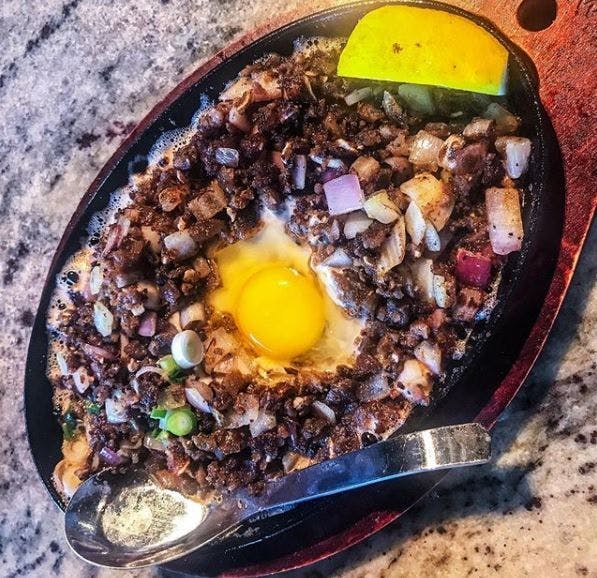your cart
Your cart is empty.
8 Delicious Dishes From the Philippines
Filipino cuisine is considered to be the next big thing in the culinary world, as the most popular dishes are crossing oceans and reaching more people. The country has had a variety of influences throughout its long history, and the knack for combining surprising flavours has resulted in no-frills yet delicious dishes.

Filipino cuisine is considered to be the next big thing in the culinary world, as the most popular dishes are crossing oceans and reaching more people. The country has had a variety of influences throughout its long history, and the knack for combining surprising flavours has resulted in no-frills yet delicious dishes.
Adobo
Adobo is a Filipino dish many already know about. It is made by stewing meat such as pork, chicken, or seafood, with a bay leaf and peppercorns in soy sauce and vinegar. The ingredients may differ from region to region, as in the southern region, you may get adobo cooked in coconut milk. The combination of sweet, sour and spice is immensely popular around the country and goes perfect with rice.
Sisig
Sisig is served on a hot stone plate and is a staple in most eateries and restaurants around the Philippines. The dish is made up of parts of a pig’s head and innards, so no part would go to waste. The parts are boiled and broiled, seasoned with vinegar and soy sauce, and mixed with chopped onions, and when served on the piping hot plate, the meat sizzles until crisp. Some recipes may add mayonnaise or egg to make it creamier, but the traditional way is to incorporate the brain!
Dinuguan
A loose translation of dinuguan is “to be stewed with blood”. Its name may not sound appealing, but it shares elements with blood sausages and black pudding. Pork offal such as the kidneys, intestines, lungs and heart and a little meat are simmered in a gravy made up of pork blood, vinegar, garlic and chilli. Once stewed, the resulting dish combines savoury, spicy and sour with a pork flavour. It is often served with a sweet rice cake. The recipe is a reflection of the poor history of the country, like sisig; nothing goes to waste.
Sinigang
The savoury and sour soup sinigang is cooked with pork, beef or shrimp, with pork being the most popular. The meat is stewed with garlic, onions, tomato and tamarind for hours, with more vegetables such as long beans, spinach and aubergine being added towards the end. Green peppers might be added too, for a spicy flavour. After hours spent simmering, what is left is a hearty soup, with a slightly sour taste from the tamarind. The dish is perfect for cold rainy days.
Kare-kare
Another stew, but kare-kare is different from other Filipino stews because of the thick and savoury peanut sauce. It is traditionally made with oxtail, but other meats may be added or substituted, as well as seafood. Whichever meat option you choose, kare-kare goes well with steamed rice, and many consider having bagoong, a fermented seafood paste which finishes the dish and adds some salty flavour.
Lechon
After adobo, lechon might be one of the best known Filipino dishes. Originating in Spain, the dish is a whole roasted pig cooked over charcoal and is mainly eaten at special occasions, festivals and national holidays. It can be prepared in two ways; visayan lechon is stuffed with herbs, garlic, peppercorn, spring onions and lemongrass, and served with vinegar or soy sauce. Luzon lechon is usually just flavoured with salt and pepper and served with a liver-based sauce.
Crispy Pata
When you can’t try lechon, crispy pata is a fantastic alternative. The dish is made up of the entire pig’s leg, and then deep fried to perfection. Served with a soy-vinegar dipping sauce, as well as with chopped garlic and chilli to garnish, the dish is very popular throughout the country. Some restaurants also serve pata boneless as a speciality!
Pancit Guisado
Pancit guisado is one of the most popular Filipino dishes, particularly among foreigners. It is customary to eat it at birthday parties, as the pancit or noodles represent long life. There are other variations of pancit dishes, but pancit guisado remains the favourite. The noodles are sautéed and served with vegetables, shrimp and meat, cooked together in a broth with soy sauce and fish sauce.
Using ingredients from our online Filipino food store, you can try making some of these dishes at home! Be sure to also take a look at our previous blogs on Asian cuisine, from popular Filipino street foods to the most unique Japanese foods.Image credit: Sea Taste Test, Arjiel Joseph F. Garduque, Vivas Melody / Instagram
this site uses cookies
We and our advertising partners use cookies on this site and around the web to improve your website experience and provide you with personalised advertising from this site and other advertisers. By clicking allow, you accept the placement and use of these cookies for these purposes. Learn More


